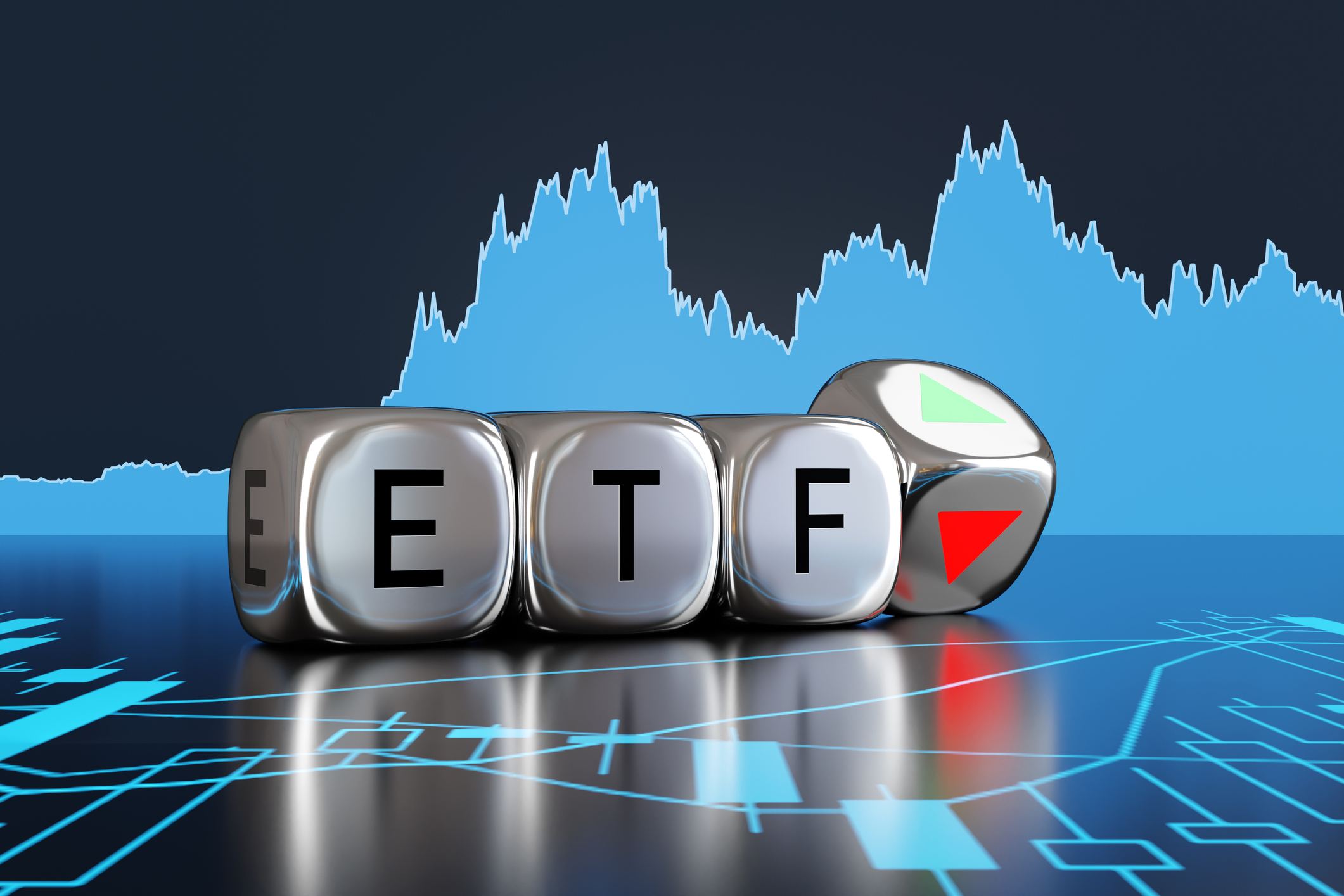How to Invest in ETFs for Beginners
Learn how to invest in ETFs with this beginner's guide.


A decade ago, younger investors would have to wait to accumulate sufficient capital to build an investment portfolio. Today, it's much easier to learn on the fly between smartphone apps and low- or no-cost investment platforms without losing your shirt.
One of the best and simplest ways to build a diversified portfolio is through using exchange-traded funds (ETFs), which give you access to hundreds of stocks in a single fund at very low fees.
But what is an ETF? Exchange-traded funds are similar to mutual funds in that they hold a collection of stocks and bonds in a single fund. Unlike mutual funds, they are bought and sold on stock exchanges, can be traded anytime the exchange is open, and you can start your ETF investing even if all you have to invest is $50.

Sign up for Kiplinger’s Free E-Newsletters
Profit and prosper with the best of expert advice on investing, taxes, retirement, personal finance and more - straight to your e-mail.
Profit and prosper with the best of expert advice - straight to your e-mail.
For example, you can own a tiny slice of some of America's largest companies through the SPDR S&P 500 ETF Trust (SPY), America's oldest and largest ETF with $494 billion in assets under management. It's so good at covering the bases, many large institutional investors have some of their holdings in this ETF.
How do beginners invest in ETFs? Read on and we’ll give you a roadmap to success.
Before you invest in ETFs, try your hand at a practice portfolio
Before investing your hard-earned dollars for real, you’d be wise to practice using a simulated trading application. It will help you better understand the entire investment process, from selecting the ETFs for your portfolio and allocating a certain percentage or weight in each ETF to deciding how often you might rebalance your portfolio based on your personal investment goals.
Most online brokers provide practice accounts where you can learn about ETF investing without betting any of your actual savings.
For example, even if you don't have a TD Ameritrade account, you can sign up for its paperMoney account on its Thinkorswim trading platform. It provides real-time data so you can get to work setting up a practice portfolio of ETFs. Like all new apps, it might take some time upfront to learn the basics of the trading platform.
Another good trading simulator from an online broker is eToro, whose demo accounts allow you to practice ETF investing with $100,000 in virtual funds. Other trading simulators worth exploring that are provided free by media businesses include two from MarketWatch (owned by Dow Jones & Company) and Investopedia (owned by IAC Inc.).
If you're new to ETF investing and decide to use a practice portfolio to get comfortable with the process, it's important to establish a set period — say two to three months — for learning the ropes. Ultimately, however, your greatest learning will come from your actual experiences investing real money over time.
The KISS rule
Now that you've set up your practice account, it's time to consider how broadly based you want your portfolio to be. For example, do you want it to be 100% equity ETFs like the SPY? (Equity investments provide partial ownership in public companies.) Or would you also wish to include bond ETFs to see how a more balanced portfolio might work? (Bonds, often referred to as fixed-income investments, provide a set amount of interest on the face value of a bond, periodically over the duration of the bond.)
Berkshire Hathaway (BRK.B) founder Warren Buffett said in the company's 2013 letter to shareholders that he had instructed the trustee of his wife's inheritance to put 90% of the amount in a low-cost stock index fund and the other 10% in short-term government bonds. This is called a 90/10 fund. Studies show that this allocation between equities and fixed income holds up quite well in most market downturns.
So, if you want to keep it simple, you could go with two ETFs: a total world stock market ETF such as the Vanguard Total World Stock ETF (VT), which gives you exposure to stocks in the U.S. and elsewhere, and a total bond market ETF such as the iShares Core U.S. Aggregate Bond ETF (AGG), which tracks the performance of the Bloomberg U.S. Aggregate Bond Index, giving you broad exposure to U.S. investment-grade bonds.
A more elaborate portfolio might include as many as 10 ETFs with six or seven equity funds, including those focused on small and large-cap stocks in the U.S., international ETFs for developed-market and emerging-market stocks, and a couple of other possibilities.
The bond portion might include AGG along with two or three other fixed-income ETFs covering more specific investments such as TIPS (Treasury Inflation-Protected Securities), international bonds, and high-yield or sub-investment grade bonds.
That's the beauty of using a practice account. It allows you to experiment as much as you want without costing you a cent.
Get into buying
If you've figured out the ins and outs of ETF investing and feel ready to put real money to work in an ETF portfolio, the next step is to fund your online brokerage account and start investing.
TD Ameritrade and eToro were already mentioned in this article. Other well-known online brokers to help you get started include Charles Schwab, E*Trade, Fidelity, and Interactive Brokers. In addition, it's important to note that each of these online brokers provides fractional share investing, so if you only have $100 to start, you could still buy 10 ETFs for your portfolio, with a specific weighting or dollar amount allocated for each of them.
If you're new to ETF investing, it's important to understand the costs involved.
While many online brokers provide commission-free trading, you'll want to confirm how much it costs, if anything, for each buy or sell transaction. Further considerations include whether there are account minimums and fees for transferring your account to another financial institution in the future. Also, check to see what research is provided, and at what cost. Many online brokers provide it for free.
The other cost to be aware of are the fees charged by the ETFs themselves for managing the funds. The SPY, which was mentioned earlier, charges an annual operating expense of 0.0945% of the fund's net assets. So, you will pay $0.95 for every $1,000 invested in the ETF. That fee is deducted from the fund's income, not from your brokerage account.
It's time to step up and invest in ETFs
If you're worried it's too late to start, consider this: According to a 2021 Personal Capital study, the average age a person starts investing is 33.3. The survey showed many investors fresh out of college don't have free cash to invest, and approximately 44% of Gen Z investors said limited funds were a significant factor in failing to invest.
The critical thing to remember is it's not how much you invest but how early you invest. A little each year over 40 or 50 years adds up.
If you're a beginner, take your time and learn the basics before getting involved with more complex investment instruments such as options and derivatives. As Warren Buffett rightly suggests, you can succeed by buying and holding just two low-cost ETFs.
Related Content
Get Kiplinger Today newsletter — free
Profit and prosper with the best of Kiplinger's advice on investing, taxes, retirement, personal finance and much more. Delivered daily. Enter your email in the box and click Sign Me Up.

Will has written professionally for investment and finance publications in both the U.S. and Canada since 2004. A native of Toronto, Canada, his sole objective is to help people become better and more informed investors. Fascinated by how companies make money, he's a keen student of business history. Married and now living in Halifax, Nova Scotia, he's also got an interest in equity and debt crowdfunding.
-
 Which Stores Are Closing (and Which Aren’t) for Easter 2025?
Which Stores Are Closing (and Which Aren’t) for Easter 2025?Dozens of major retailers are planning to close their doors on April 20. Find out which of your go-to stores are on the list.
By Rachael Green Published
-
 What 401(k) Savers Near Retirement Can Do Amid Market Volatility
What 401(k) Savers Near Retirement Can Do Amid Market VolatilityWhether retirement is years away, a year or two out, or in the rearview mirror, here's how to handle uncertainty in your 401(k).
By Donna Fuscaldo Published